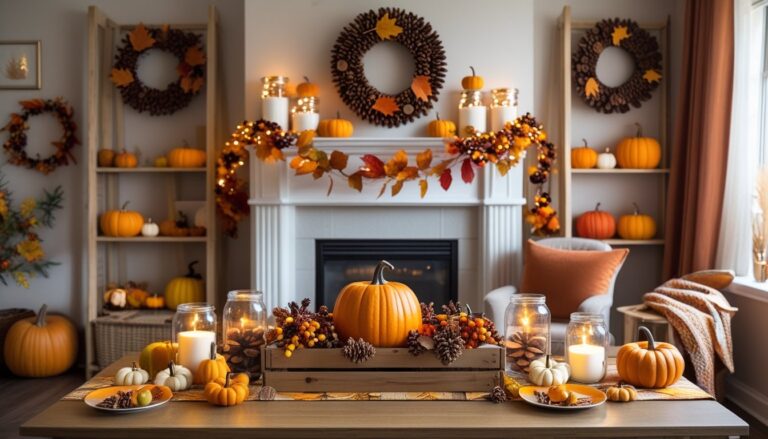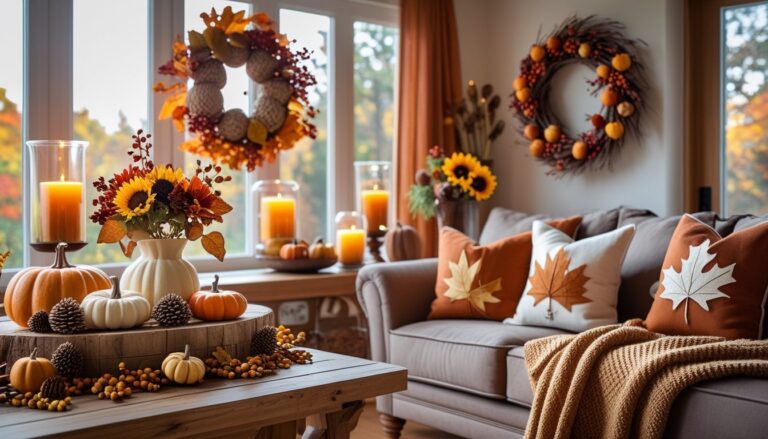8 Neutral Living Room Colors That Elevate Any Space
Neutral colors are a popular choice for living rooms because they create a calm and inviting space. These colors work well with different styles and allow people to easily change their decor without clashing.
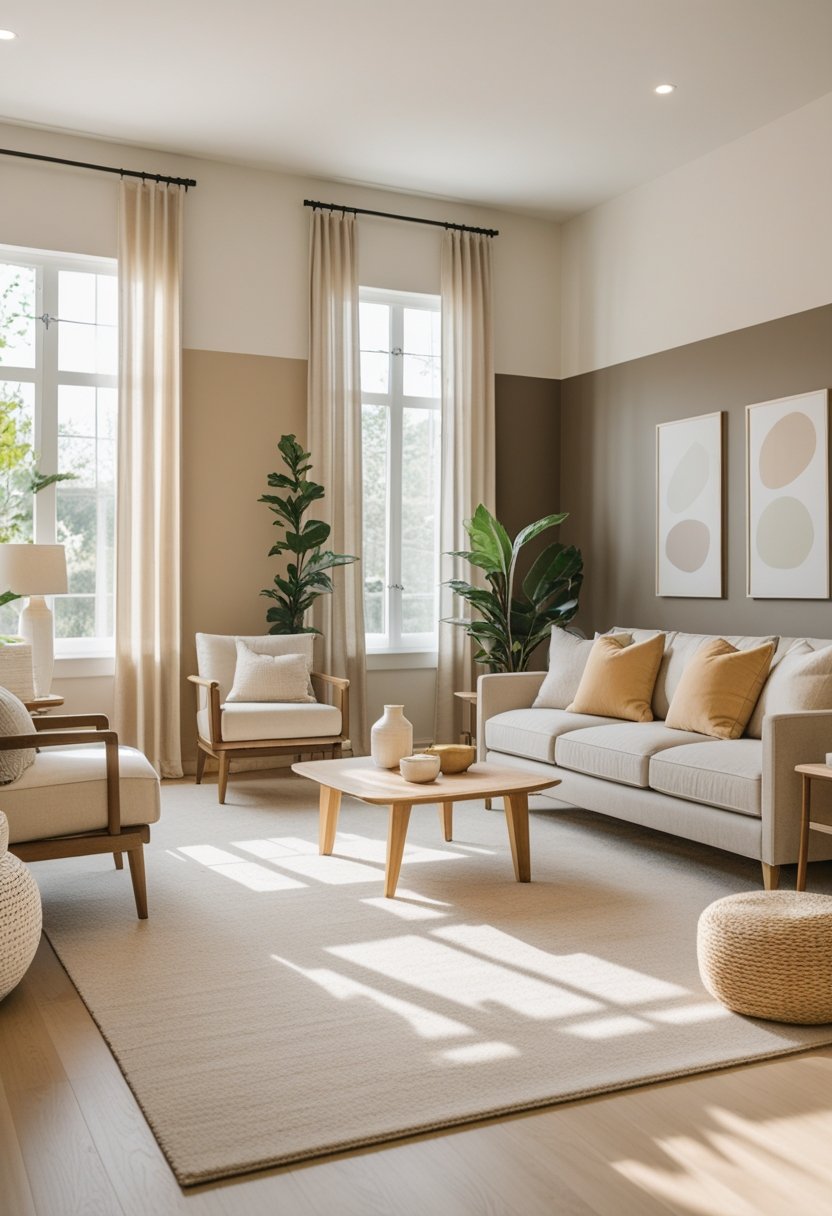
Choosing the right neutral colors can help make a living room feel both stylish and comfortable. Understanding which tones work best can guide homeowners in creating a versatile and timeless space.
1) Soft White for a clean, airy feel
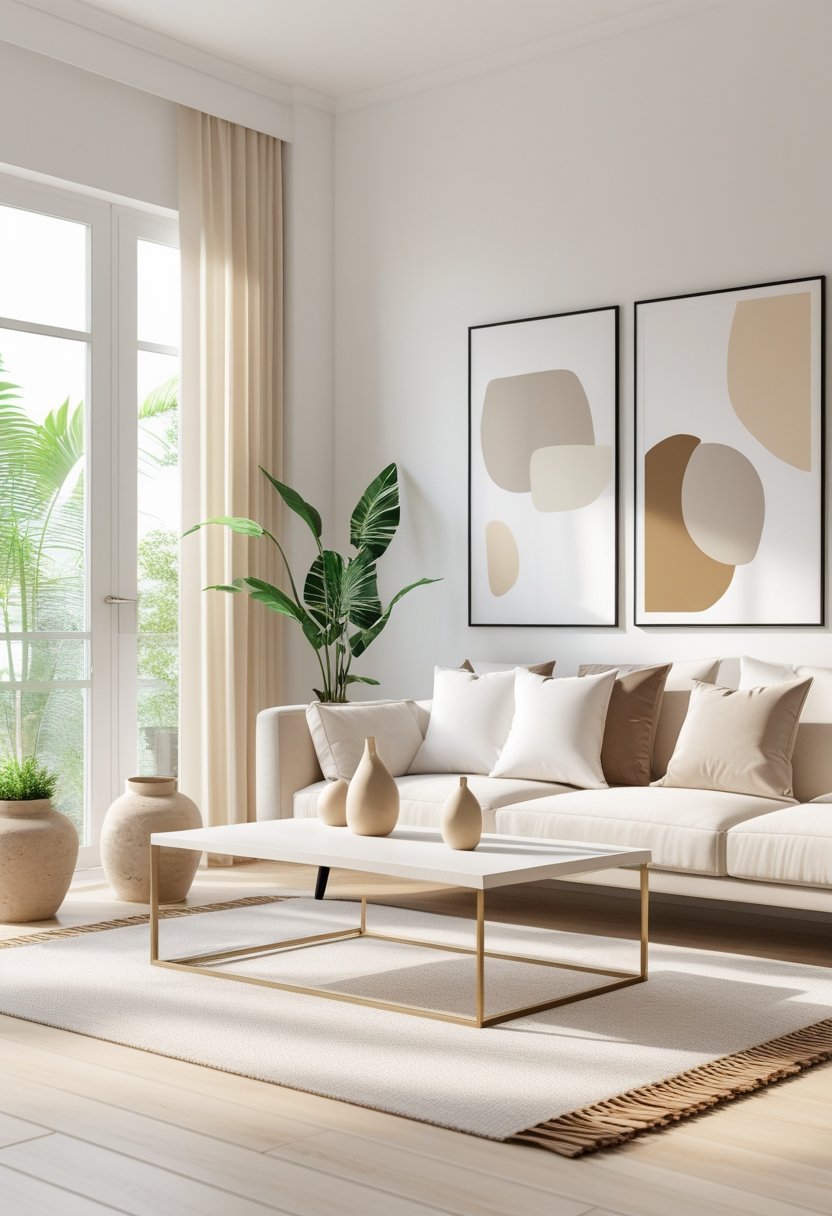
Soft white creates a fresh and open atmosphere in living rooms. It reflects natural light well, making the space feel larger and brighter.
This color works well with minimalist decor and simple designs. It provides a calm, neutral background that highlights furniture and textures without overwhelming the room.
Using soft white allows for easy mixing with other neutral tones, such as beige and gray, adding depth while maintaining a clean look.
2) Warm Beige to add subtle warmth
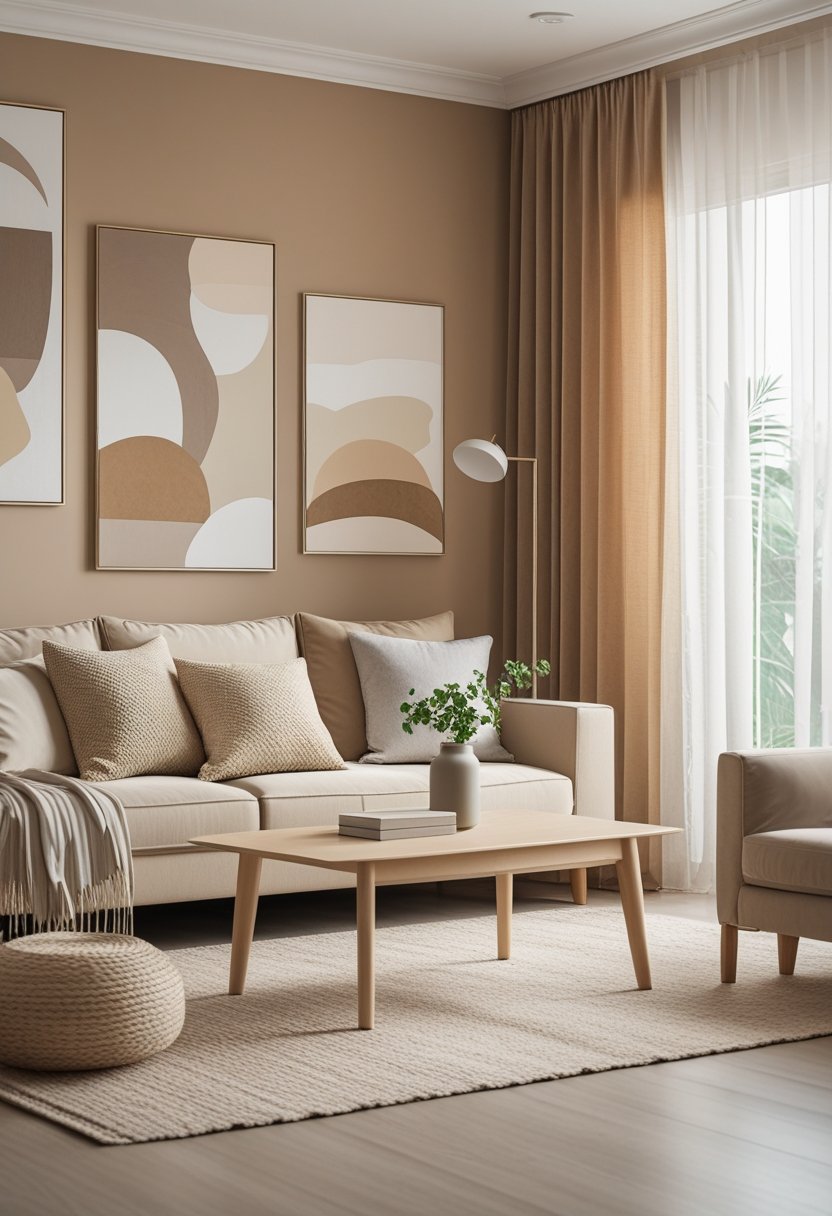
Warm beige offers a soft, inviting tone that adds subtle warmth to any living room. It creates a cozy atmosphere without overpowering the space.
This color works well as a neutral backdrop. It pairs easily with natural materials like wood, rattan, and linen for added texture.
Adding small accents in terracotta or burnt orange can enhance the warmth. Warm beige helps a room feel calm, comfortable, and timeless.
3) Greige for a modern, versatile look
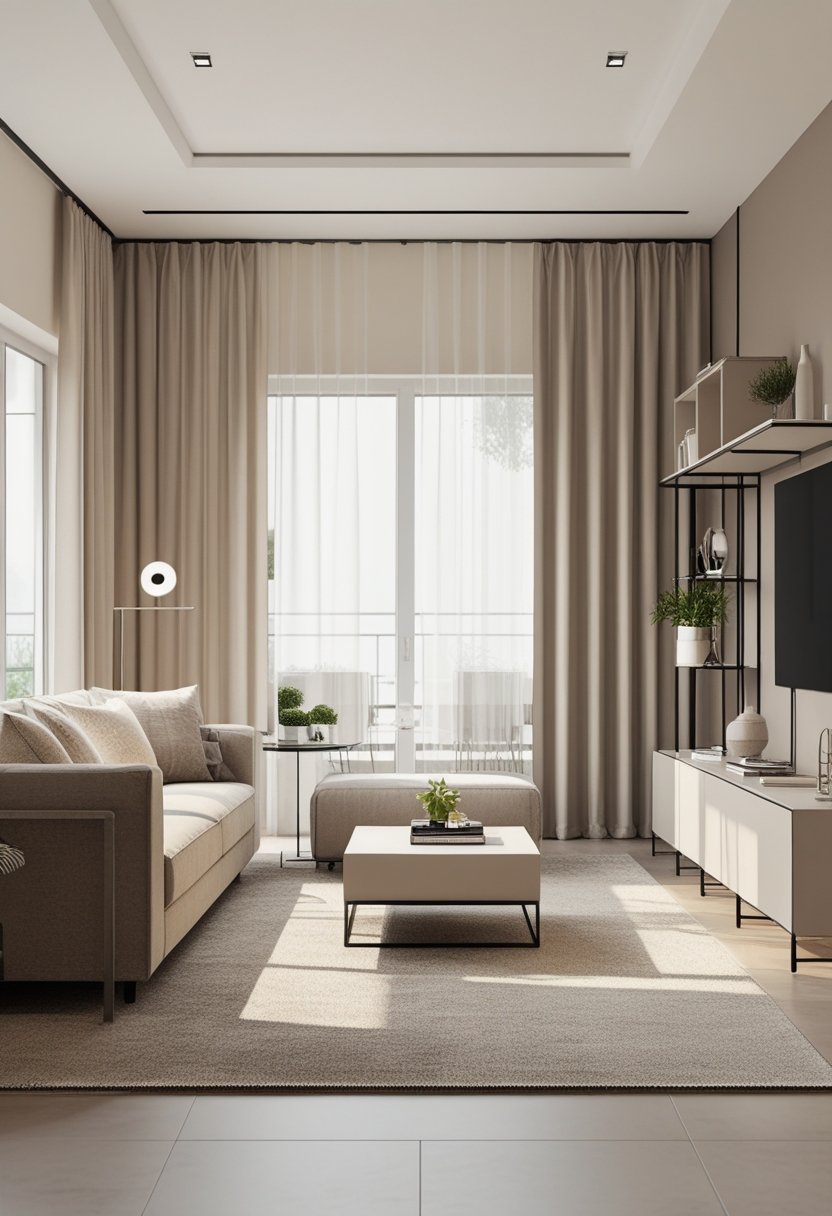
Greige blends gray and beige to create a neutral color that feels both warm and cool. This balance makes it a great choice for modern living rooms.
It works well with many styles, from minimalist to cozy and textured spaces. Greige provides a calm and flexible backdrop that pairs easily with different furniture and decor.
This color helps create a space that is timeless and adaptable. It can highlight both soft and bold design elements without overpowering the room.
4) Cream for a cozy, inviting atmosphere
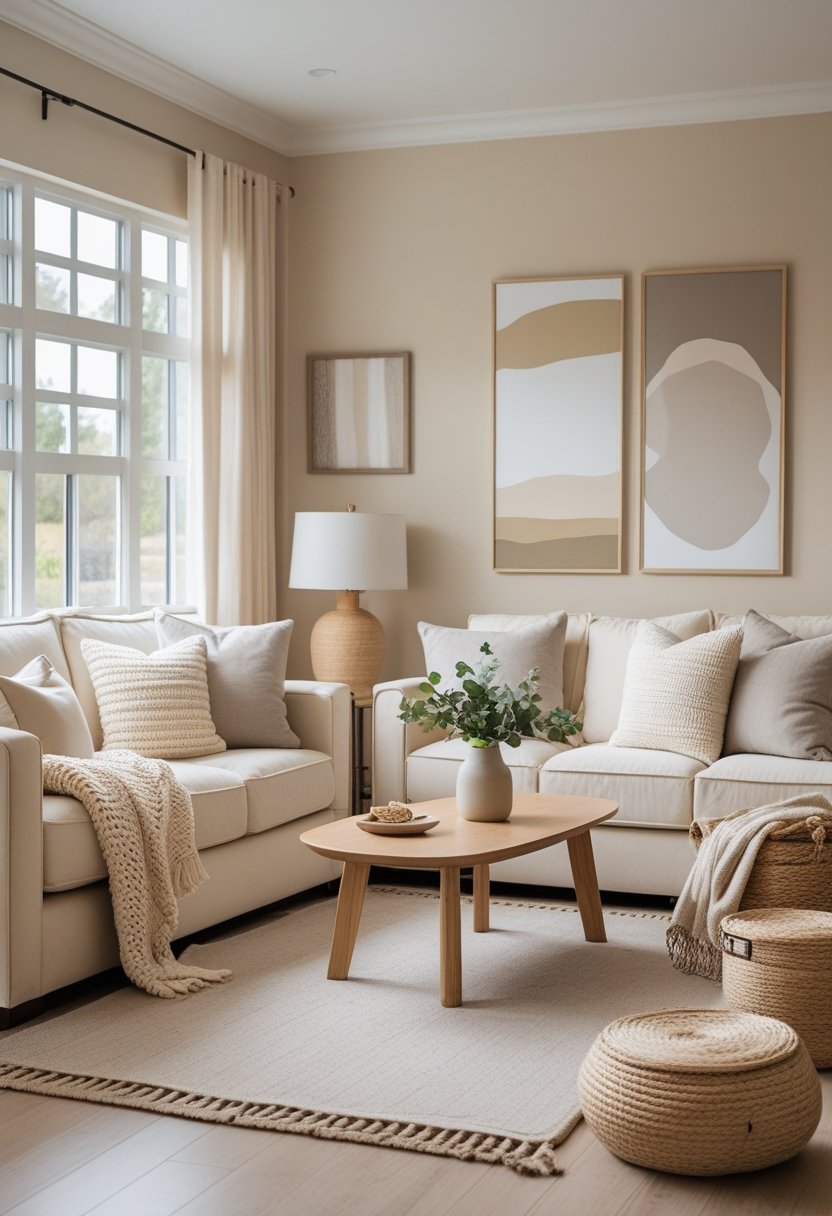
Cream creates a warm and inviting look in living rooms. It is a soft neutral that adds subtle warmth without overwhelming the space.
Using cream as a base allows different textures to stand out. Chunky throws, velvet cushions, and layered blankets add depth and comfort.
This color works well with both modern and classic styles. It brightens rooms by reflecting natural light, making spaces feel calm and cozy.
5) Taupe as a sophisticated neutral base
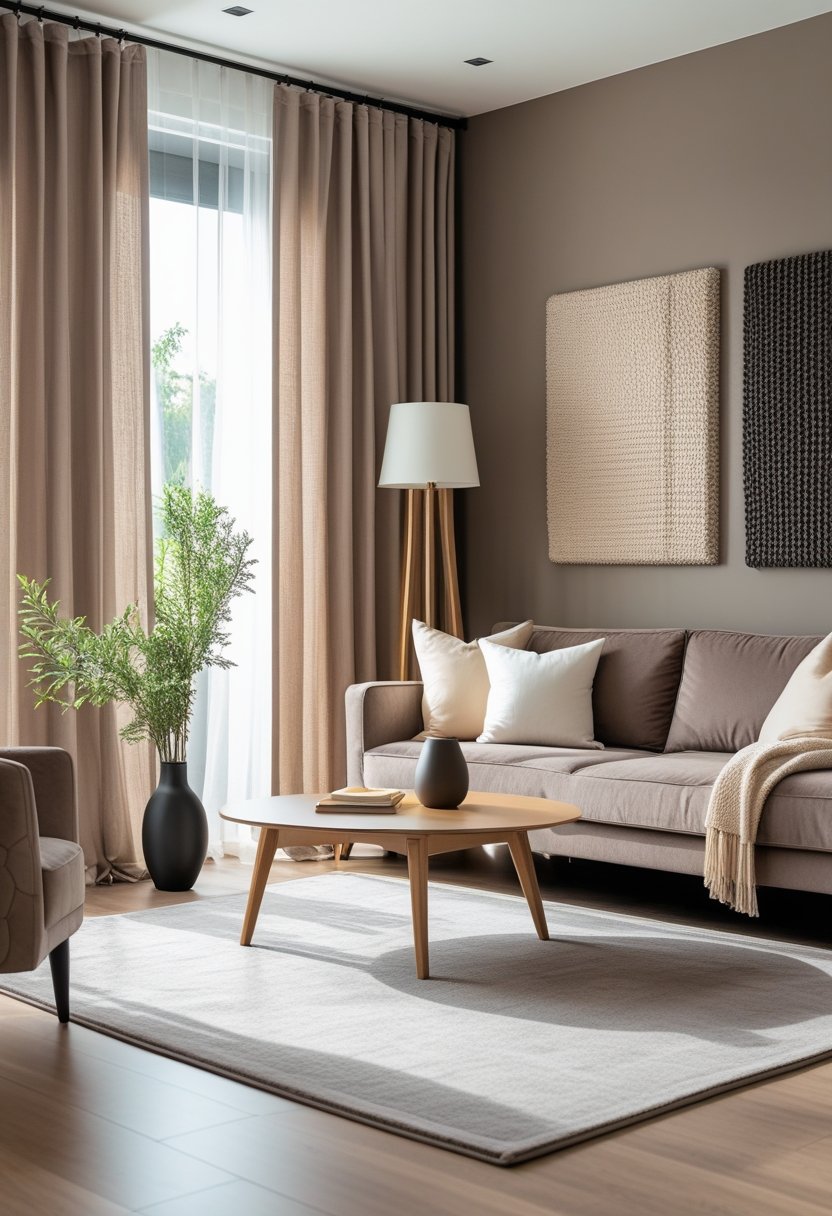
Taupe blends gray and brown, creating a balanced color that works well in many living rooms. It offers warmth without being too strong or cold.
Designers use taupe to build spaces that feel calm and elegant. It pairs well with both warm and cool tones, making it a flexible choice.
Using taupe walls or furniture can add depth and subtle sophistication. Its neutral quality supports various styles, from modern to classic.
6) Light Gray for a chic, contemporary vibe
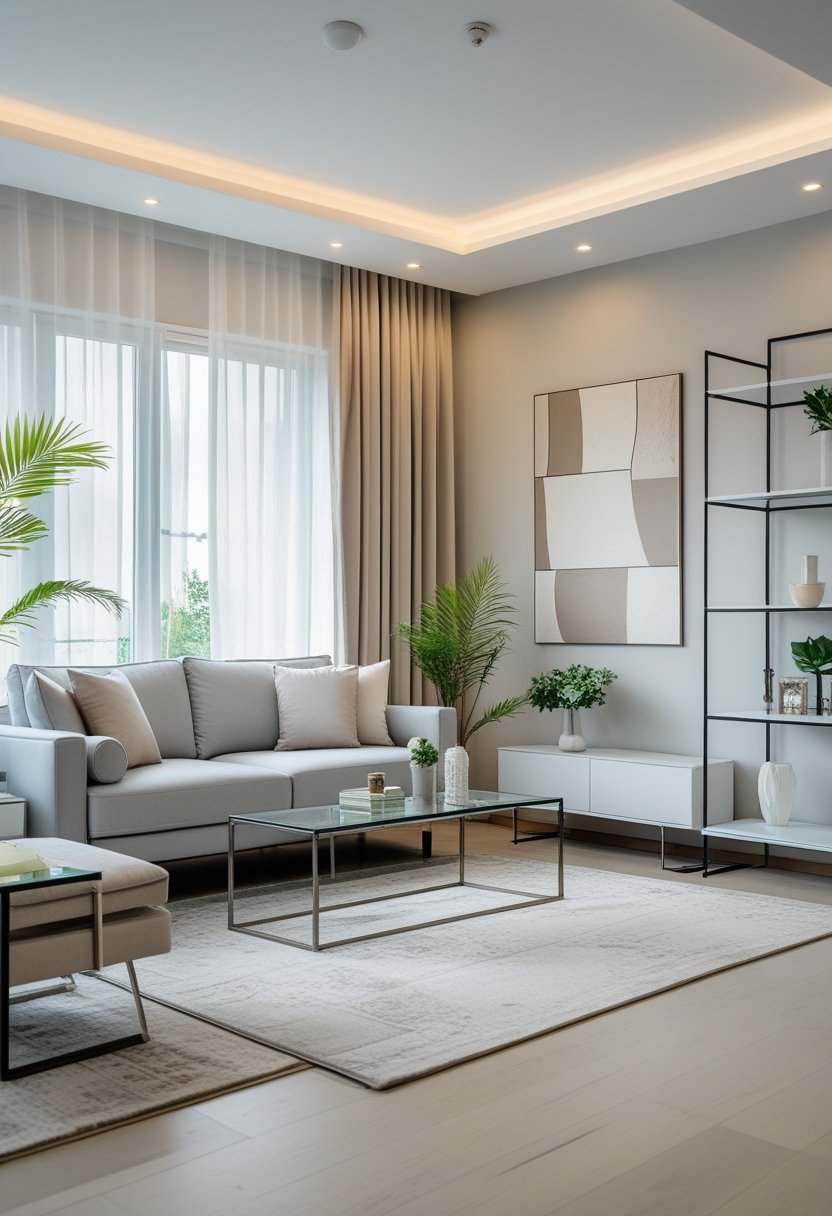
Light gray brings a modern and calm feel to any living room. It reflects natural light well, making the space feel open and fresh.
Pairing light gray with white trim or glass accents keeps the room crisp and clean. Adding soft pastels or warm neutrals balances the cool tone and adds comfort.
It works well with simple furniture and minimal decor, creating a sleek yet inviting environment. This color suits both modern and classic styles.
7) Muted Brown to create depth and comfort
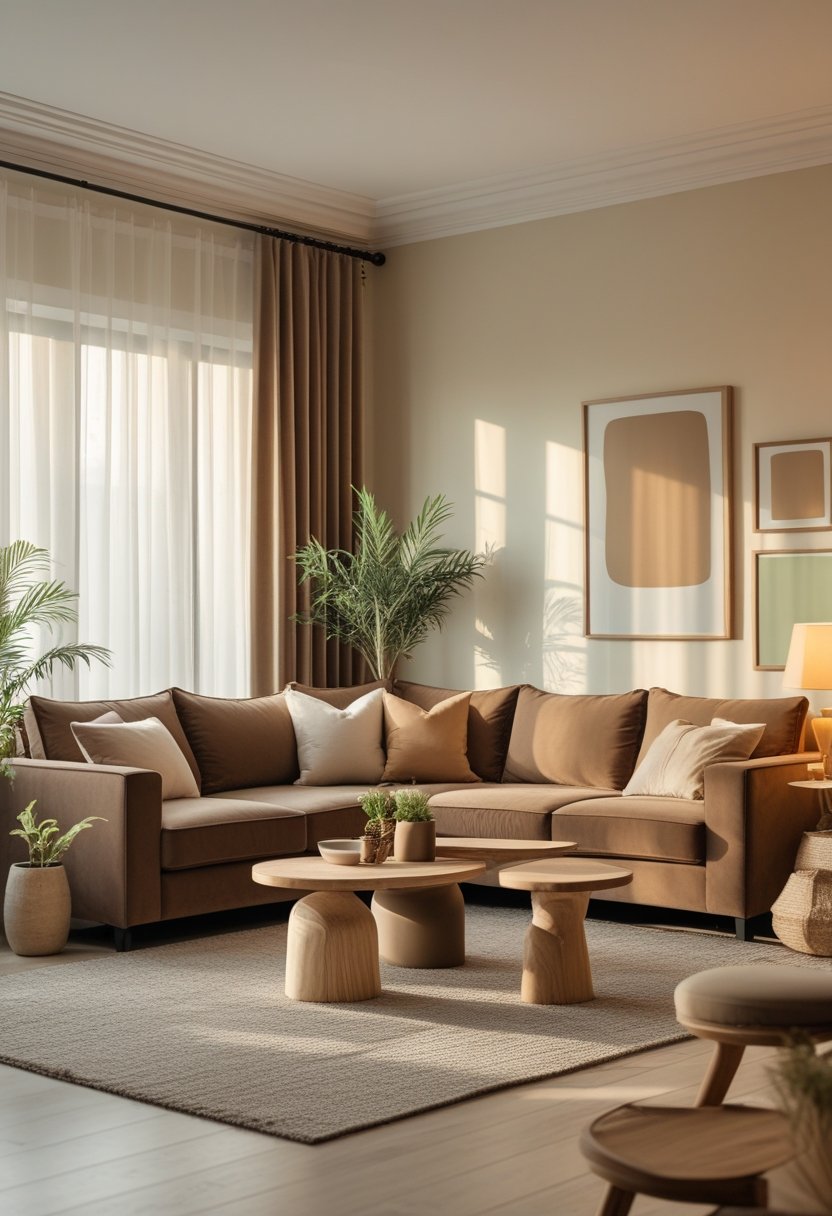
Muted brown is a neutral shade that adds warmth without overwhelming a space. It works well on walls or furniture, offering a quiet, grounded feel.
This color brings depth by providing a rich background that pairs easily with soft whites, beiges, or natural wood tones.
It creates a cozy atmosphere while maintaining a modern, calm look suitable for many living room styles.
8) Off-White to brighten without starkness
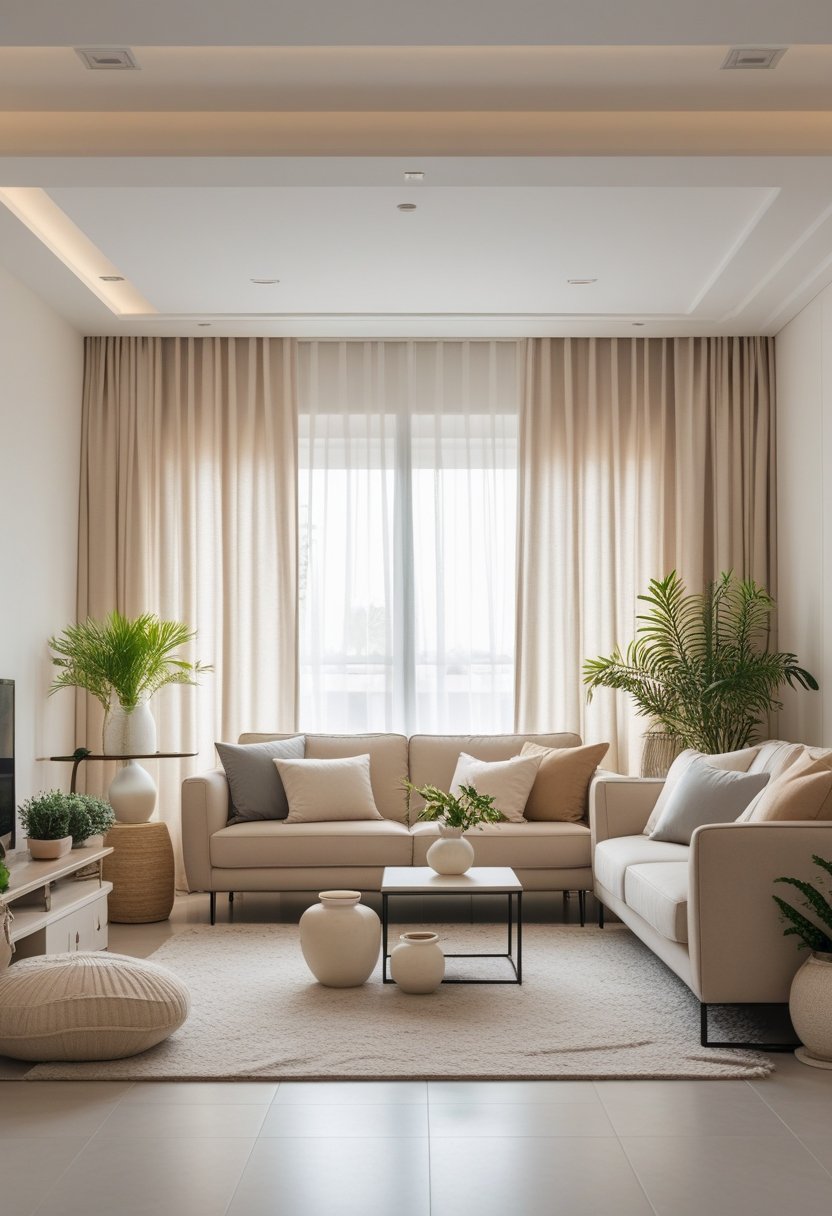
Off-white is a popular neutral for living rooms because it adds light without feeling cold. It sits between pure white and deeper neutrals, offering warmth and softness.
This color keeps spaces bright and airy while avoiding the harshness of plain white. It works well with many styles and pairs easily with trims and furnishings. Off-white creates a calm, inviting atmosphere that suits various decor choices.
How to Choose the Right Neutral Living Room Color
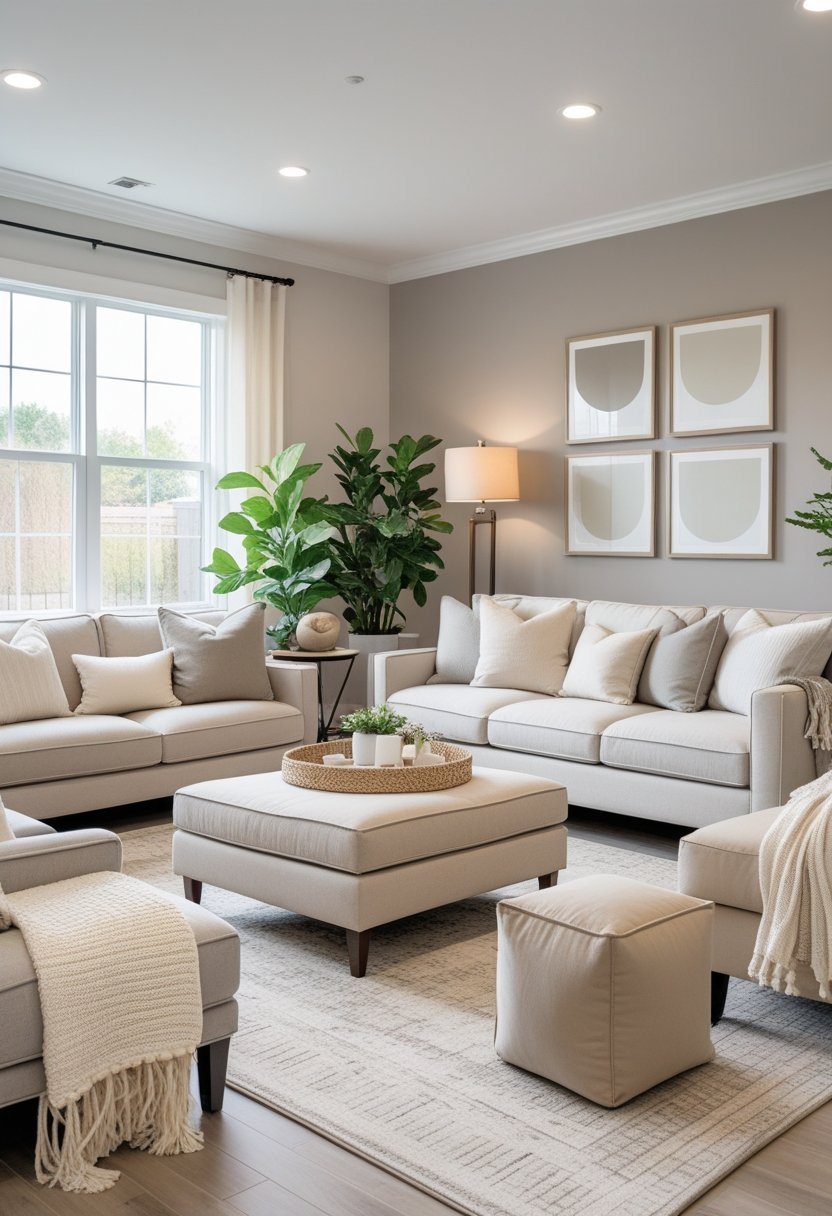
Choosing a neutral color involves more than picking a shade that looks nice. It requires understanding how light affects color and how the color fits with existing furniture and decor. These factors help create a balanced and inviting space.
Considering Room Lighting
Lighting plays a major role in how a neutral color appears on living room walls. Natural light changes throughout the day and can make a paint color look warmer, cooler, or duller. Rooms with lots of sunlight often work well with cooler neutrals like soft gray or greige.
For rooms with less natural light, warmer neutrals such as beige or warm white can add coziness and prevent the space from feeling cold or dark. Artificial lighting also matters—incandescent bulbs bring out warm tones, while LED lights often highlight cooler shades.
Testing paint samples on different walls and observing them at various times of day will give a clearer idea of how the color reacts to the room’s lighting.
Coordinating With Existing Decor
The chosen neutral color must complement existing furniture, rugs, and artwork. Warm neutrals like taupe and beige usually pair well with traditional wood finishes and warm fabrics. Cooler neutrals fit better with modern or minimalist styles and metal or glass accents.
It’s helpful to look for undertones in the new paint. For example, a gray with blue undertones matches cool décor tones, while one with brown undertones blends better with earth tones.
To keep the living room cohesive, consider the strongest colors in the room and select a neutral that supports them rather than clashes. A simple way is to use a color wheel to identify harmonious combinations.
Styling Tips for Neutral Living Rooms
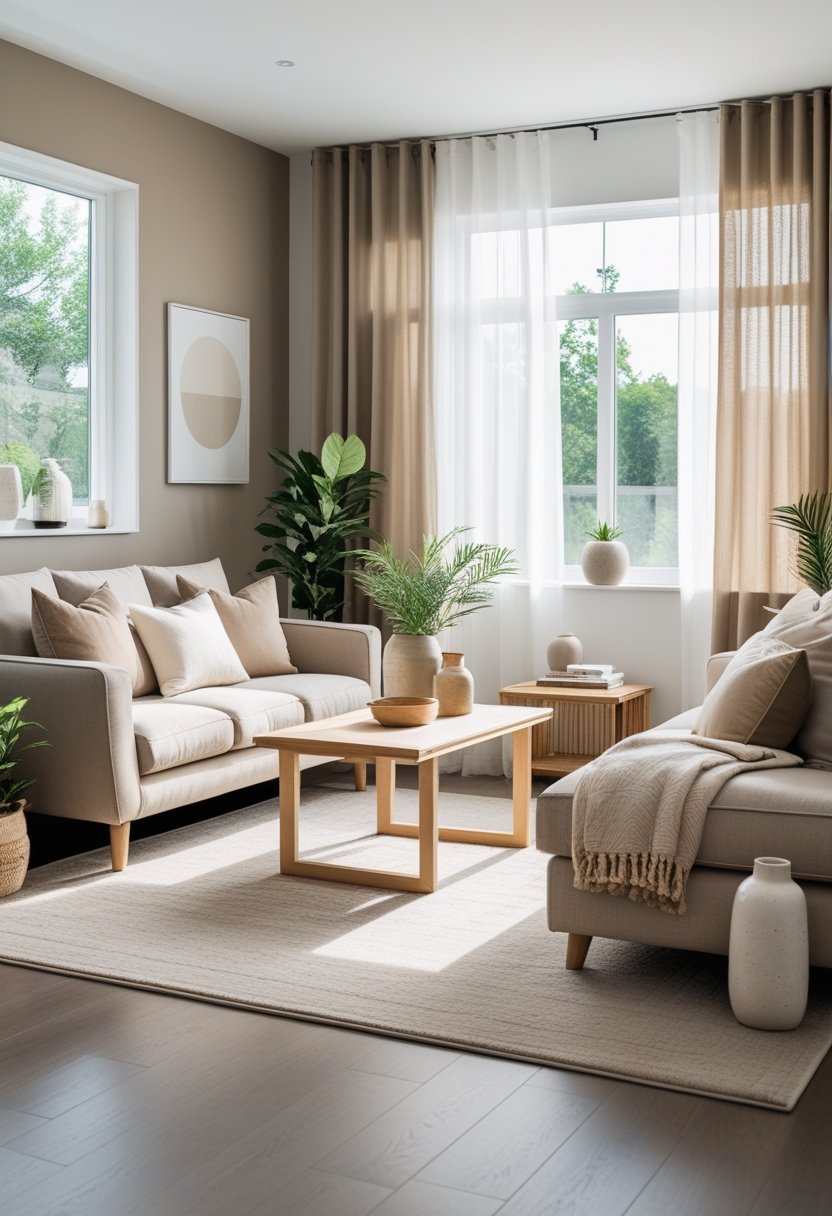
A neutral living room feels calm but can risk looking flat without careful styling. Adding small pops of color and mixing different materials helps create a space that is both inviting and interesting.
Using Accents for Visual Interest
Accents like pillows, rugs, and artwork add life to neutral rooms. Select one or two bold or rich colors to use sparingly. For example, deep navy or forest green pillows can stand out against beige or gray sofas.
Metallic details, such as brass lamps or frames, provide subtle shine without overpowering the palette. Plants with dark green leaves also break the monotony and improve the atmosphere.
The key is balance. Avoid clutter by limiting vibrant accents to small pieces. This keeps the room feeling cohesive, stylish, and easy to change over time.
Mixing Textures for Depth
Layering textures brings dimension to a neutral space. Combine smooth surfaces like leather or glass with softer fabrics such as linen, wool, or velvet.
A chunky knit throw on a sleek sofa creates a cozy contrast. A sisal or jute rug adds natural texture underfoot, balancing out polished wood furniture.
Using matte and glossy finishes together also adds interest. Textured cushions, woven baskets, and carved wood elements enhance the tactile experience without adding color, making the room visually rich while staying neutral.
Frequently Asked Questions
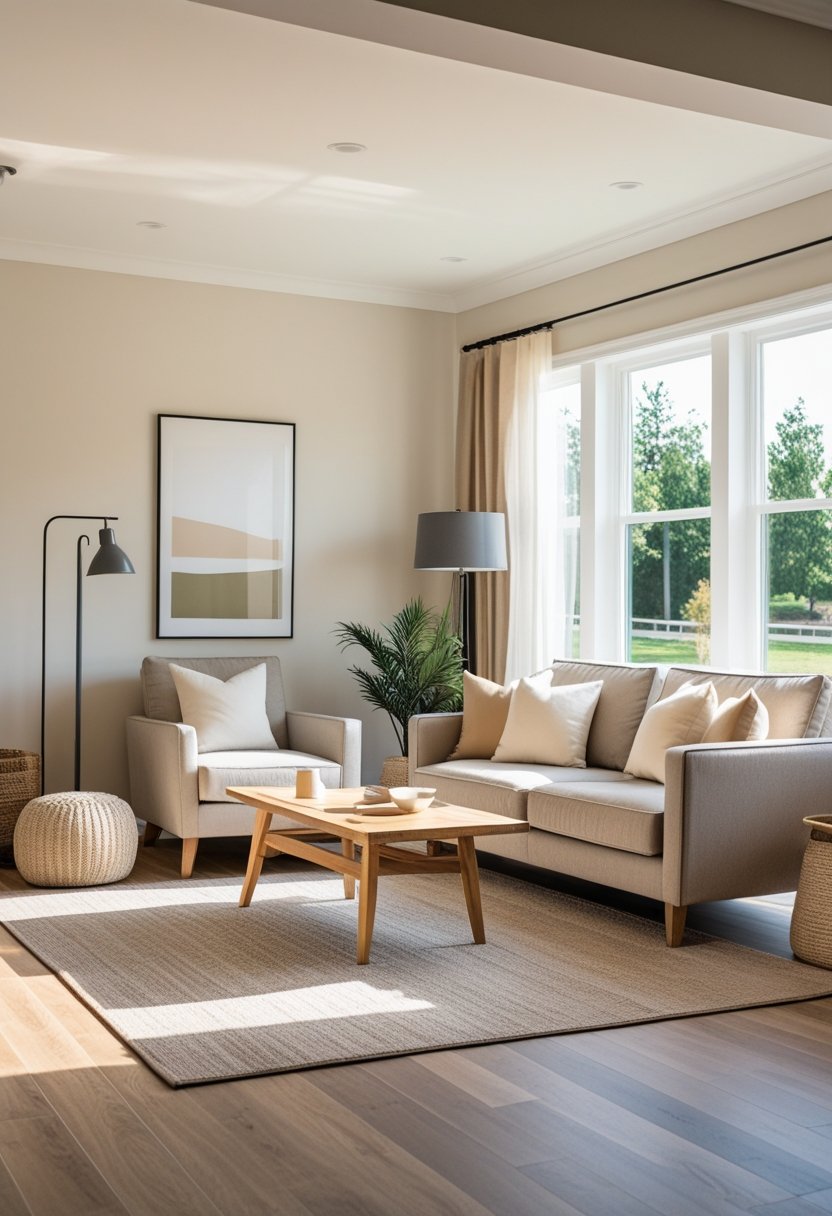
Neutral living room colors often include tones that create calm and inviting spaces. The choices range from soft whites to warm beiges, greiges, creams, and taupes, each serving a specific style need.
What are the most popular neutral paint colors from Sherwin Williams for a living room?
Sherwin Williams offers several popular neutral colors like “Alabaster,” a soft white that brightens spaces.
“Accessible Beige” is a warm beige that adds subtle warmth without overpowering.
“Repose Gray,” a greige, works well for modern and versatile designs.
What are the most favored Behr neutral colors for a living room?
Behr’s “Swiss Coffee” is a creamy white that gives a cozy, inviting tone to living rooms.
“Balanced Beige” offers a warm beige shade that feels soft yet grounded.
“Classic Gray” is a gentle greige that pairs well with many decor styles.
Which neutral paint colors are frequently recommended by design experts like Joanna Gaines for living rooms?
Joanna Gaines often recommends soft whites or warm beige tones to keep spaces fresh and comfortable.
She favors greige shades for their ability to provide a clean, modern look without feeling cold.
Taupe is also suggested for a sophisticated and timeless backdrop.





